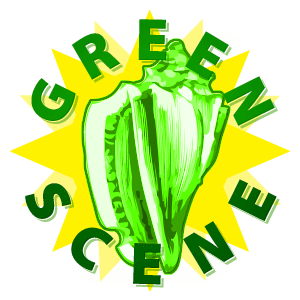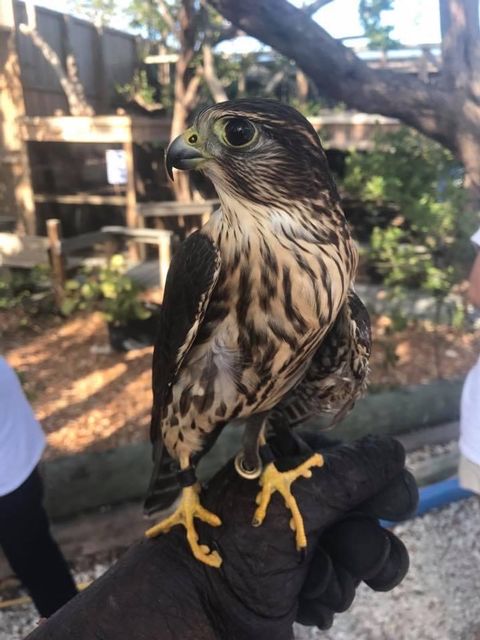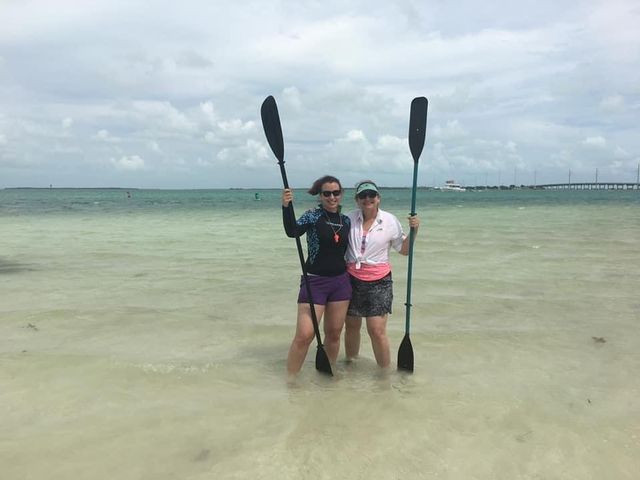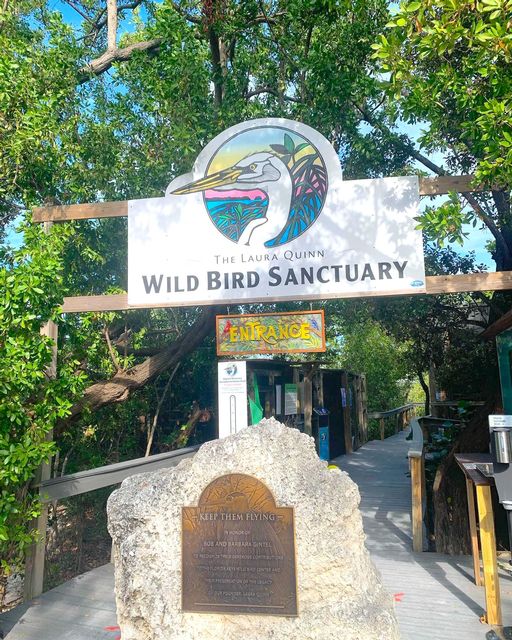Jordan Budnik: Steward of the Florida Keys Wild Bird Rehabilitation Center
Jordan Budnik, executive director of the Florida Keys Wild Bird Rehabilitation Center in Tavernier, has already achieved at age 29 what she hoped to accomplish perhaps in her pre-retirement years.
The Atlanta native landed her first full-time job in the Keys as the center’s education coordinator in May 2017 after graduating from Georgia College & State University in Milledgeville.
A couple of months later, Budnik was promoted to assistant director. A year later, she became executive director — overseeing a 10-person staff, several interns and volunteers.
Budnik admits her professional success has “blown her entire game plan,” but the job of rehabilitating Keys wild birds fulfills her with daily gratitude.
The center’s Laura Quinn Wild Bird Sanctuary currently cares for about 85 nonreleasable injured birds. The nearby affiliated Mission Wild Bird Hospital has treated more than 730 this year.
The tenacious Budnik also proved wrong a college professor, who cautioned the young woman that earning a B.S. degree in outdoor education, minoring in environmental science, meant she would never be more than a camp counselor.
Birds have been a lifelong fascination for Budnik.
From age 11 to 18, she volunteered at Zoo Atlanta tending to birds, educating the public about birds and working with the zoo’s free-flighted bird show.
“Birds are like a flying puzzle,” Budnik said. “There’s so much we don’t know; they’re a mystery. Every bird species is unique.”
In the future, Budnik hopes to expand the center’s Mission Wild Bird Hospital to further develop hospital medical treatment for Keys injured birds.
Keys Traveler: When did you first come to the Florida Keys and why?
Jordan Budnik: At 20, I visited on a weekend trip to Key West with my aunt and cousin. It was my first time seeing mangroves and the diverse marine life taking shelter in their roots.
KT: What aspects of the Keys environment or way of life matter most to you?
JB: The native wildlife steals my heart every day, as does my Keys community of locals.
KT: Who or what inspired you to become passionate about respecting and protecting the Keys’ natural world?
JB: Nature itself. Mentors and my family supported that passion, giving me opportunities leading me here. The Keys are part of the Atlantic Flyway, a major north-south migration path for birds, contain the Florida Keys Reef Tract — today known as Florida’s Coral Reef — and our neighbor Everglades National Park. We live in one of the most unique places on this planet. In many ways, our natural world is in trouble. I want to help protect it.
KT: How does that passion influence your work or profession?
JB: Passion for the outdoors is as contagious as laughter. I try to incorporate education and outreach in my job whenever possible, not only because I wish to share that joy but because teaching others how to be good stewards of the environment is essential to its preservation.
KT: What are some of the ways, personally or through your work, that you connect with and/or help protect the local environment and unique lifestyle?
JB: Directing a wildlife nonprofit, I have the chance to devote my time to the environment every day and hire people sharing that desire to make a difference. The remarkable Bird Center staff takes in over 900 native birds in need of rehabilitation every year. Our organization facilitates the Florida Fish and Wildlife Conservation Commission’s Monofilament Recovery and Recycling Program for Monroe County, keeping fishing hooks and lines out of the environment.
KT: What keeps you energized, challenged and focused on your path?
JB: I do not want to be a bystander to the larger environmental problems our world is facing. If I have the power to do something good in the world, I need to do it. Wildlife does not have a voice. It is up to us to advocate for them.
KT: What do you hope your positive environmental actions will accomplish?
JB: I hope my work with the center will help reverse some of the damage we humans have caused. Most of the birds that come through our doors are here because of people.
KT: What message do you want your actions and example to communicate to people you encounter?
JB: We as humans cannot divorce ourselves from the natural world. Often, people believe they are powerless to enact meaningful changes, but even small actions in our daily lives have a ripple effect. The worst thing we can do is to do nothing.
KT: What’s your favorite natural or eco-friendly activity in the Keys?
JB: Kayaking through mangrove tunnels. Plus, it is a great way to pull out hard-to-reach trash from the mangroves.
Budnik with Islamorada fire chief Terry Abel and Rotarian Frank Derfler installing a monofilament line recycling bin.
The remarkable Bird Center staff takes in over 900 native birds in need of rehabilitation every year.






